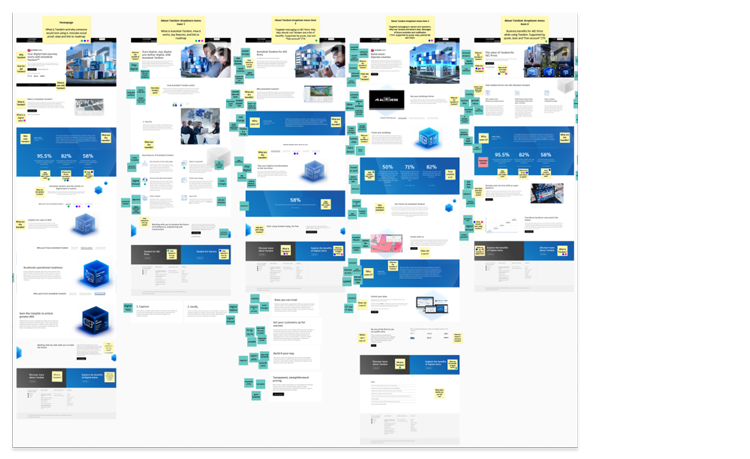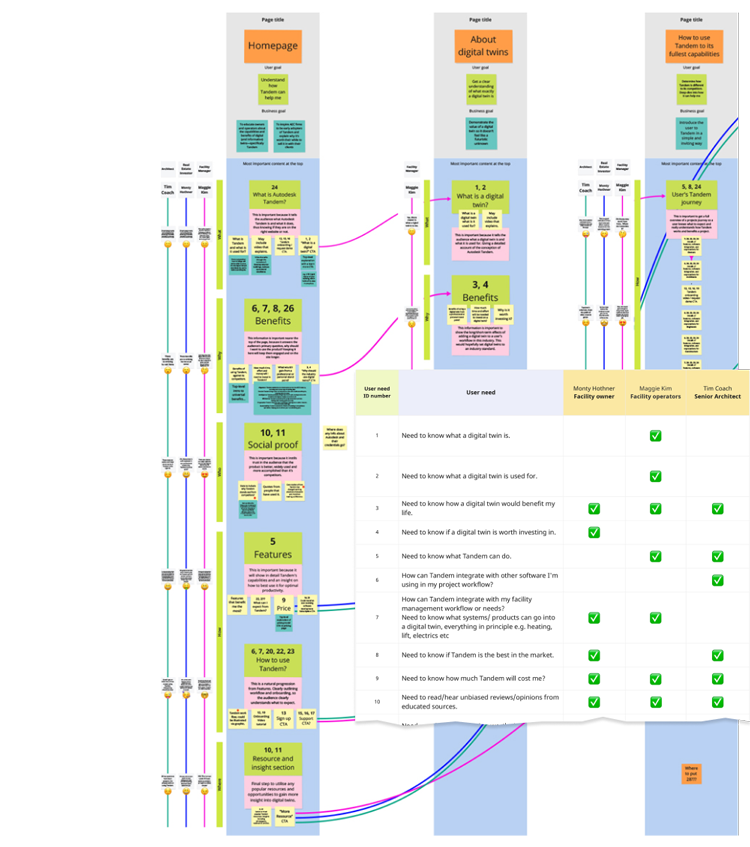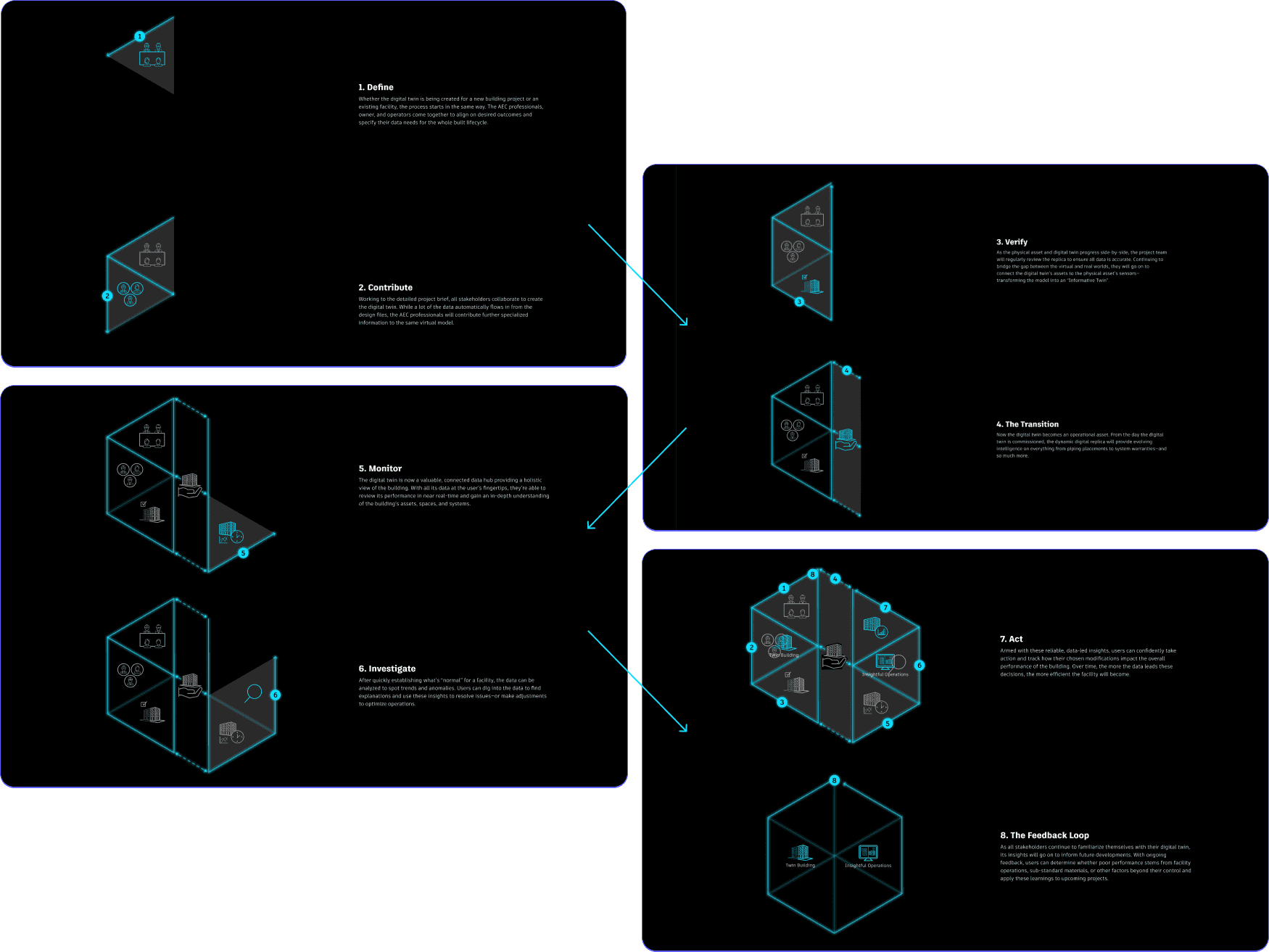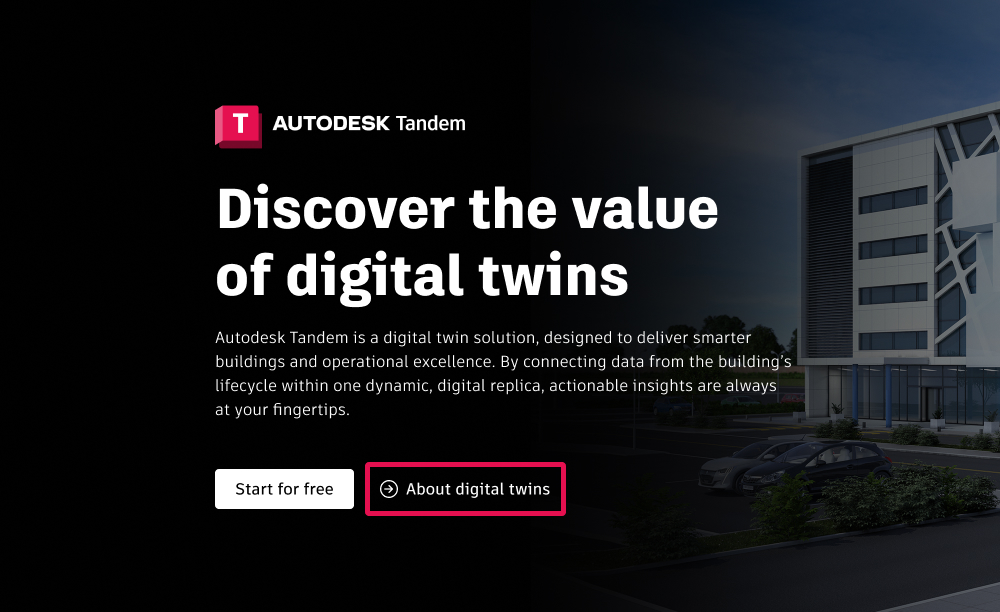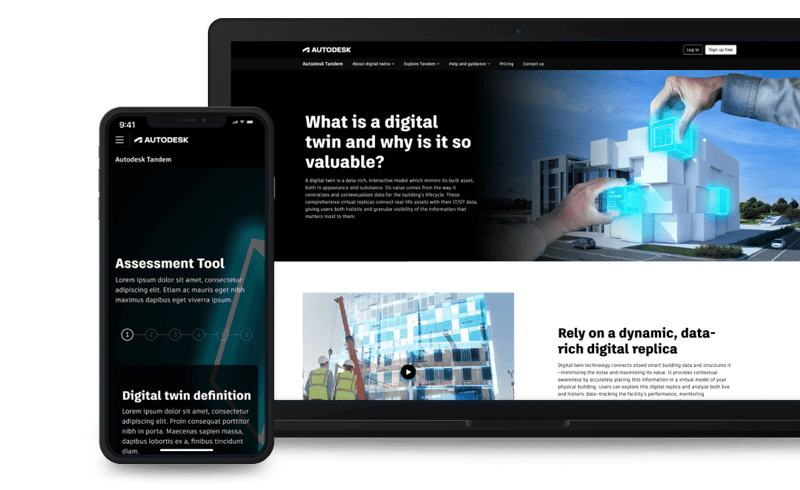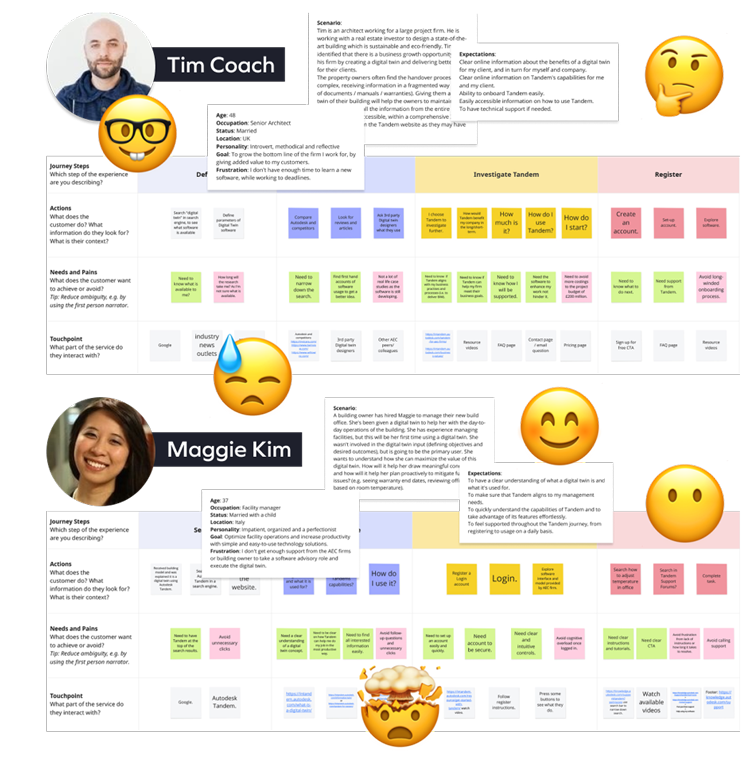
Balancing the different user needs
To ensure everyone’s needs were catered for, we set about crafting a more personalised user experience. We started the project by reviewing our existing AEC professional personas and creating new ones for a building owner and a building manager.
The team wanted to identify our prospective users’ different skillsets, motivations, and challenges to truly understand how best to serve the digital twin solution to them.
Afterwards, we produced customer journey maps describing each persona’s steps from discovery to use of the product. Their actions, needs, pains, and emotions were all documented, highlighting opportunities we could capitalise on. These insights directly informed our designs and content creation. Focusing on these core profiles throughout the project helped us to remember what we were trying to achieve and for who.
